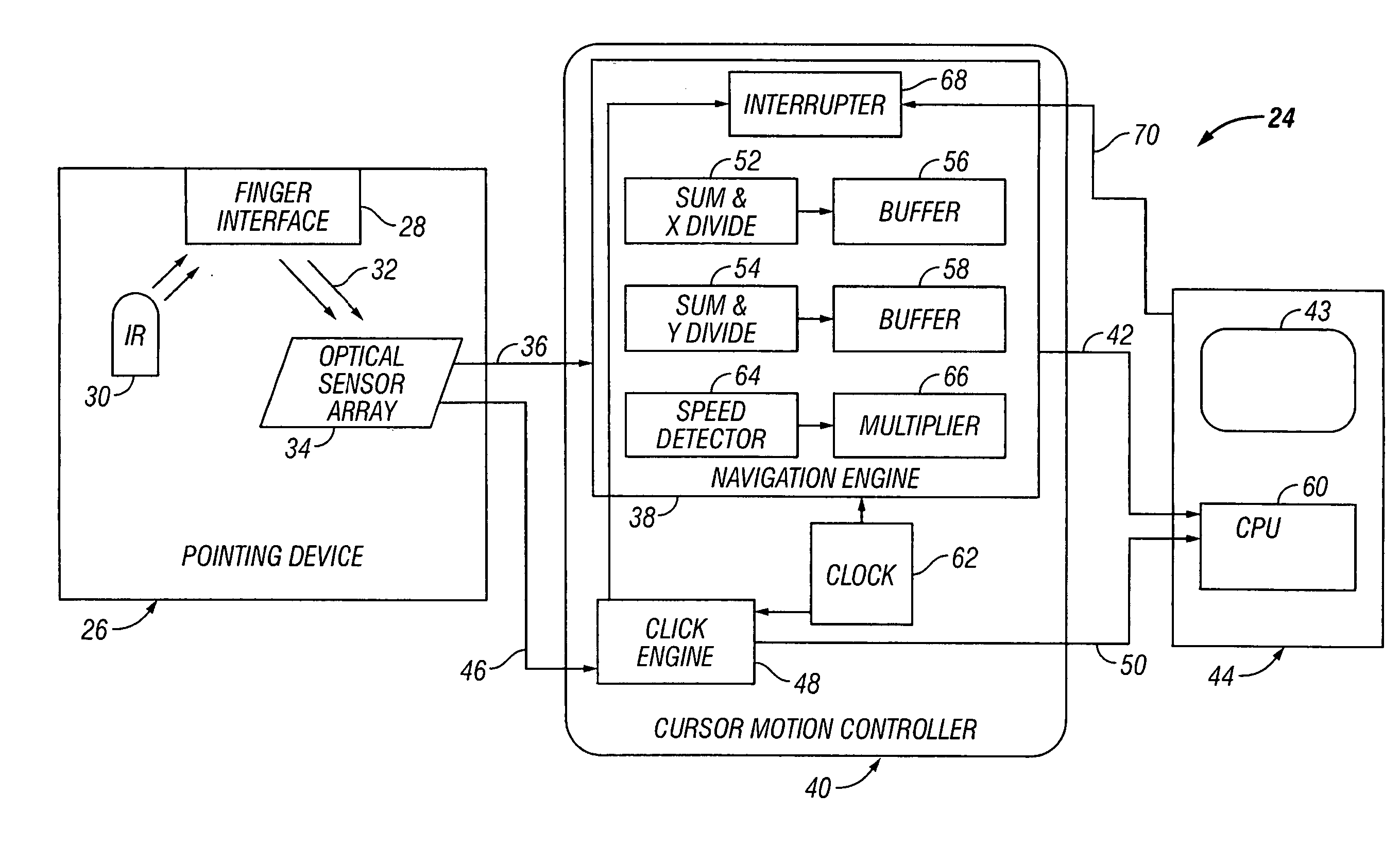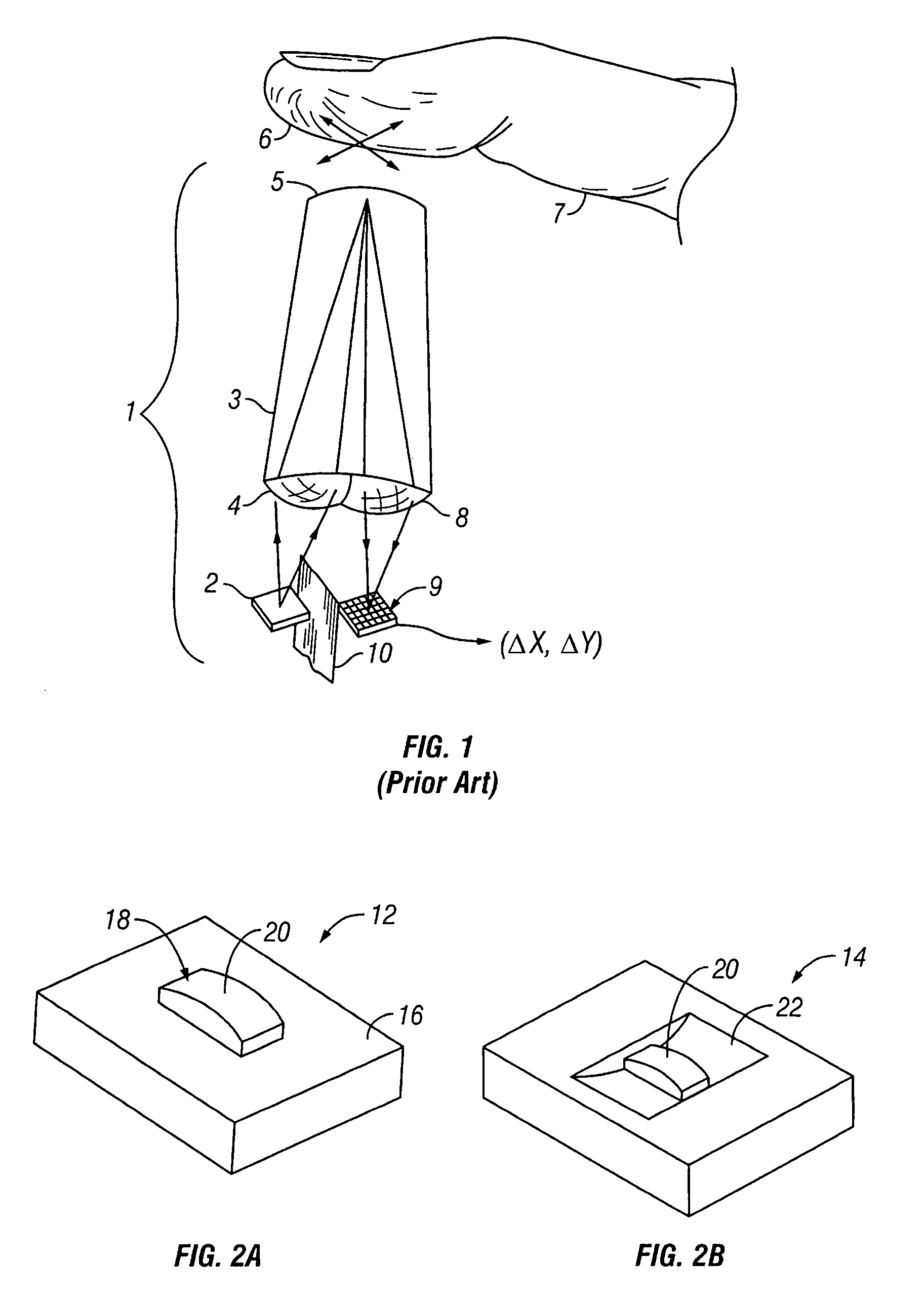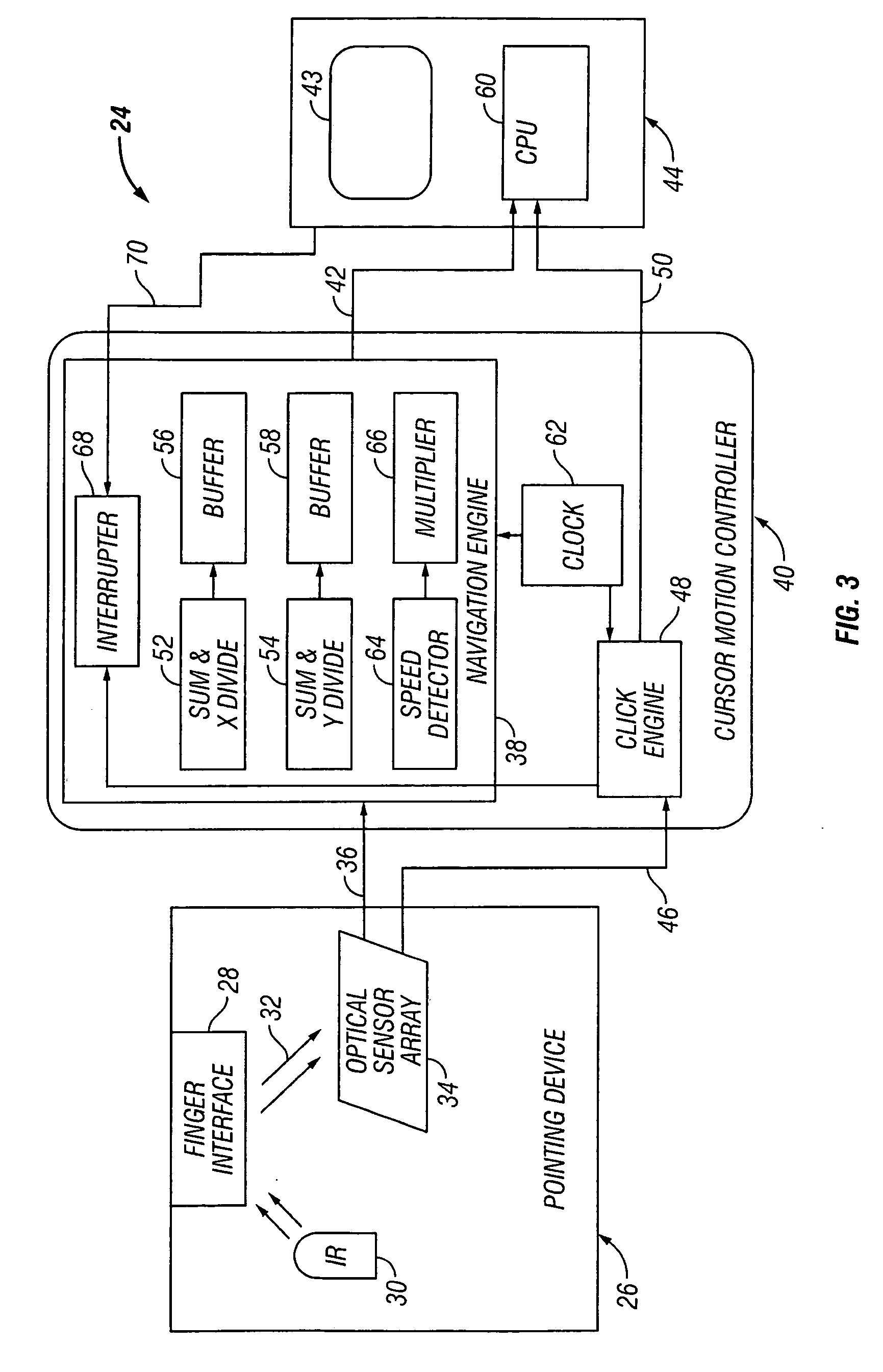Cursor motion control of a pointing device
- Summary
- Abstract
- Description
- Claims
- Application Information
AI Technical Summary
Benefits of technology
Problems solved by technology
Method used
Image
Examples
Embodiment Construction
[0014]FIG. 1 illustrates a prior art pointing device 1 that relies on the motion of a digit across an imaging surface to move a cursor on a display, details of which may be found in the aforementioned U.S. Pat. No. 6,057,540 of Gordon et al. The tip 6 of a finger 7 is pressed against the distal end or imaging surface 5 of a transparent plastic stud that forms a rod lens 3. An infrared LED light source 2 emits light that is gathered and focused by a lens 4 on the proximal end of the rod lens 3. Ridges and other surface features on the finger tip 6 are illuminated by the light conveyed through the rod lens 3. An array of photo detectors in a movement sensor 9 adjacent the proximal end of the rod lens 3 receives light reflected from the finger tip 6 which is focused on the detectors by another lens 8 also on the proximal end of the rod lens 3. The movement sensor 9 generates pixelized representations comprising a reference array and shifted versions thereof that are used to produce del...
PUM
 Login to View More
Login to View More Abstract
Description
Claims
Application Information
 Login to View More
Login to View More - R&D
- Intellectual Property
- Life Sciences
- Materials
- Tech Scout
- Unparalleled Data Quality
- Higher Quality Content
- 60% Fewer Hallucinations
Browse by: Latest US Patents, China's latest patents, Technical Efficacy Thesaurus, Application Domain, Technology Topic, Popular Technical Reports.
© 2025 PatSnap. All rights reserved.Legal|Privacy policy|Modern Slavery Act Transparency Statement|Sitemap|About US| Contact US: help@patsnap.com



